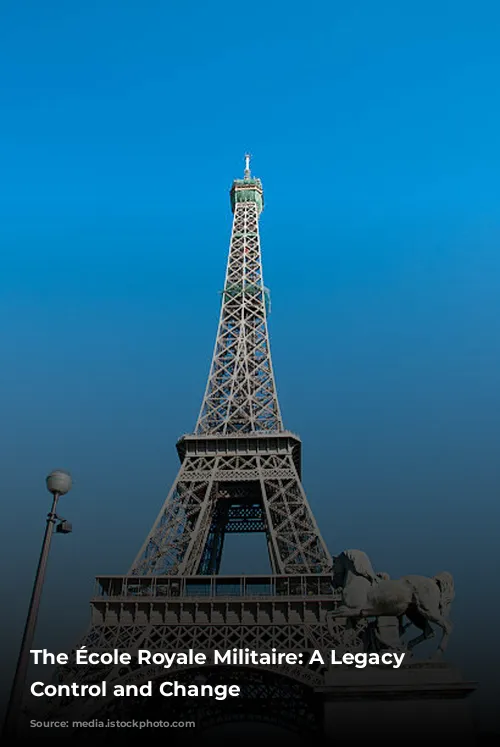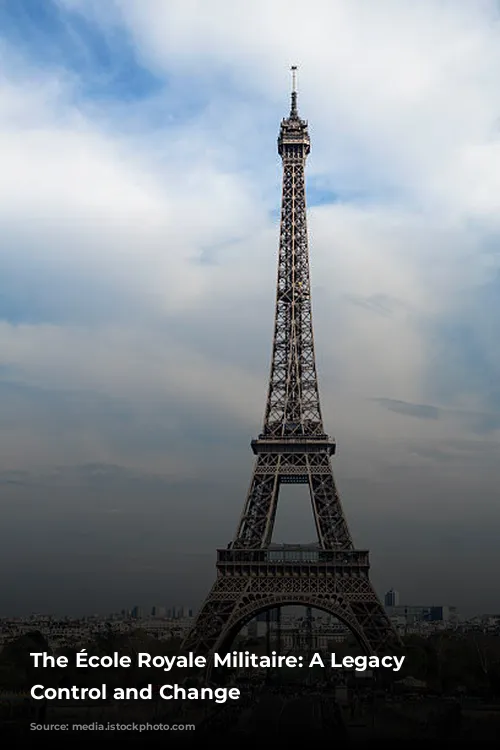This article delves into the fascinating history of the École Royale Militaire in Paris, exploring its development and challenges within the context of 18th-century France. We’ll uncover the motivations behind its creation and the factors that ultimately led to its downfall.
A School for the Elite: Shaping the Future of French Military Leadership
From its inception in 1750, the École Royale Militaire was envisioned as a beacon of military education for France’s elite. It aimed to cultivate a new breed of officers steeped in rigorous training and imbued with the values of nobility, honor, and duty. The school’s founders were deeply influenced by the earlier establishment of Saint-Cyr, a school for young girls, which emphasized the importance of a disciplined and refined education.
But this institution was not built on a blank slate. It drew upon centuries of military tradition, incorporating elements from previous state projects and adapting them to meet the evolving needs of the French army. The school’s creation and subsequent restructuring reflect the complexities of the French monarchy and its efforts to maintain control.
To ensure a steady stream of qualified candidates, the École Royale Militaire implemented a system of stringent entry requirements. Aspiring officers were subjected to rigorous scrutiny, assessed for their nobility, financial status, and familial ties to the military. This emphasis on lineage and social standing reflected the deep-seated belief in the importance of hereditary privilege within the French aristocracy.
This emphasis on social hierarchy, however, sparked debate about the role of nobility in the military and the merits of professionalization. Amidst these discussions, the school’s founders championed the concept of emulation—a belief that individual excellence could be fostered through competition and striving for improvement. This principle was intended to instill a sense of ambition and drive within the student body, motivating them to excel in their studies and on the battlefield.
From Verona to Modena: The Transformation of a Military School
The second half of the 18th century saw a dramatic shift in military strategy across Europe, with the rise of new technologies and tactical approaches demanding a more technically skilled officer corps. This shift was particularly evident in the Republic of Venice, where the need for officers trained in the latest advancements in warfare became paramount.
In response to this challenge, the Collegio Militare was founded in Verona in 1759. This institution emerged as a center of excellence for military engineering and scientific knowledge, producing graduates well-equipped to meet the demands of modern warfare.
With the arrival of General Bonaparte and the establishment of the Repubblica Cispadana, the Collegio Militare was relocated to Modena. This strategic move reflected the changing political landscape and the consolidation of Napoleonic power. The school continued to serve as a vital source of officers for the Italian army, playing a key role in shaping the future of military leadership under Napoleonic rule.
The Collegio Militare di Verona stands as a testament to the adaptability of military institutions in response to evolving needs. Its transformation from a Venetian stronghold of traditional military training to a Napoleonic academy highlights the interconnectedness of military innovation and political change.
A Legacy of Modern Architecture: The Higher School of Agriculture in Mograne
In the aftermath of World War II, Tunisia sought to embrace modernity, shaking off the shackles of colonial rule and forging a new path for its nation. This aspiration for progress extended to the realm of architecture, as evidenced by the remarkable Higher School of Agriculture in Mograne.
Designed by the renowned architect Jean Pierre Ventre and completed in 1952, this institution embodied the principles of the Modern Movement, blending functionality with a striking aesthetic. The building’s layout was conceived to optimize natural light and ventilation, while its minimalist design showcased the use of innovative materials and construction techniques.
The Mograne school served as a symbol of Tunisia’s commitment to modern education, its design reflecting a departure from traditional architectural forms and a dedication to progress. Its enduring legacy underscores the transformative power of architecture in shaping both physical and social landscapes.
However, the school has also experienced periods of neglect, with some of its annex buildings falling into disrepair. This underscores the ongoing challenge of preserving architectural heritage and ensuring that these remarkable structures continue to serve as reminders of our past.
The Higher School of Agriculture in Mograne stands as a beacon of modern architecture in Tunisia, embodying the ideals of functionality, innovation, and integration with the natural environment. It’s a testament to the enduring power of design to shape not only buildings but also the very fabric of society.


